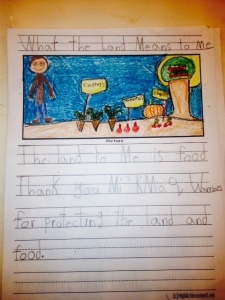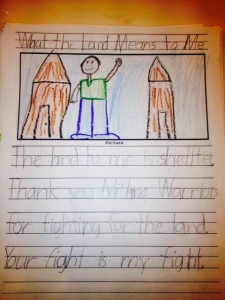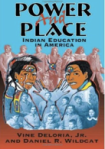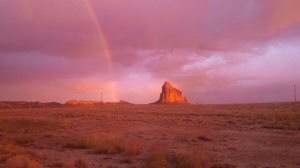Our youth must always be free, discussing and exchanging ideas concerned with what is happening throughout the entire world.” – Che Guevara
My second grade students cannot tell you stories about the disorienting, frightening, and utterly devastating aftermath of bombs being dropped in their neighborhoods. They cannot tell you about the sudden disappearance or massacre of entire families. But they can tell you story after story about the sound of a gun being fired in the middle of the night. They can tell you what happens when a bullet is shot through your window and lodges itself in the wall. My second grade students can tell you about the fear they have of being caught in gang crossfire when playing in their neighborhood. They can tell you about the time their dad was sent back to Mexico. They can tell you why they have to live with grandma while their mom or dad works to get clean from drugs. They can tell you how to hang your food in plastic bags on ropes to keep it away from mice and cockroaches. They can tell you about the times they had to run a power cord from the neighbor’s house into their house because they had no electricity.
Every day twenty-one students come to my class and each seven-year-old life is filled with truly powerful stories, heartbreakingly sad stories, and laugh out loud, hilarious stories. Some of their stories may be common and occur in other parts of the world with some variation.
Dad and mom pack up the kids. They want a better life for their children. They move to a new country or to the city. They leave their extended family behind. They struggle to learn English. Dad has to work more than one job so the family can afford a place to live and food. The kids are told that the way to succeed is to learn English and get good grades in school. Mom and dad do all they can to provide a better future for their children encouraging them to assimilate, to be American even in the face of the oppressive and dehumanizing laws of the Western Empire. They do not ever return to their place, their village or their clan. Their human spirits are broken, reshaped, and their ability to question and think for themselves is reduced generation after generation until all memories and dreams no longer exist, wiping away their true identity.
As an Indigenous educator how do I begin to keep the fires of genuine optimism, kindness and what is pure in children lit and safe from the force of imperialism? How do I fuel the fire so the ability to think, create, heal, empower, connect and act is fierce and burns hot? I don’t want to feed my students the same doctrine I consumed; it only made me uninformed, unimaginative, accepting of the Empire and a consumer of what I was told to consume – dominant ideologies. How do I help my students cling to their stories and their storytellers so that one day they too have the foundation to take a stand, to question and to not just demand the change of the system but destroy the system?
Indigenous grandmothers, grandfathers, brothers and sisters organize to protect the land and water in Canada and the United States and across the globe everyday. They have attended teach-ins and lectures, organized and attended rallies and events. They have made multiple posts to Facebook and Tweeted the heck out of Twitter with news of actions, and injustices, in hopes of educating others, bringing global awareness to the struggle of Indigenous Nations and to build solidarity. They are living life as activist. They are activist in their own way. They are living, breathing, transforming, educating, and standing everyday acts of resurgence. They are on the front lines exposed to tear gas, pepper spray, rubber bullets, police batons, police K-9’s, racist trolls, hate, and vile contempt.
I have sat feeling helpless as I’ve watched the struggle at Elsipogtog First Nation unfold. I felt helpless because I was so close yet so far away as grandmothers and grandfathers protested the theft of Diné water and later as Navajo communities organized & continue to organize to save sacred sites. I felt helpless while a Cherokee man’s biological daughter was stolen from him. I’ve felt helpless as Native brothers and sisters stood their ground against white supremacist in North Dakota.
Multiple events in the daily lives of my Indigenous brothers and sisters and I did nothing to show my solidarity. I failed to stand with them. I failed to take ACTION. I am angry. I feel a mix of immense rage and an overwhelming sense of pride as I see the grandmothers, grandfathers, mothers, fathers, women, men, children willing to sacrifice their lives for their land, water, and ways of being because I know as a Diné woman I need to be making those same sacrifices. I need to stop feeling sorry for myself and quit making excuses. I need to get off my a$$ and put to good use the skills and opportunities I have and ACT, as a Diné woman should, with dignity, honor, strength and wisdom.
As an Indigenous woman, mother and educator I am in a unique position to fuel the fire of resurgence for generations to come. Some of the ways I am trying to serve my students is by expecting them to not be so complacent and unconditionally accepting of the conditions of their own existence. We are constantly talking about the importance of knowing yourself, where you come from and what stories your place holds for you. I share with them stories about the importance of protecting the natural world and the importance of assuming more responsibility in the classroom, in their families and in their communities. I share stories with them. I integrate stories of major issues such as poverty, human rights, and the environment across the curriculum. It helps that my students are asking questions befitting an adult perspective of what is presently occurring in the news, politically, socially, economically and environmentally. I know I have the intellectual capacity to explain to my students with complete honesty the current state of affairs in terms they can understand.
One such story I shared was that of the Mi’kmaq warriors of Elsipogtog and their current stand against destruction of their homeland. The discussion has been ongoing for several weeks, as I have kept up with current affairs through Warrior Publications consistent blog post on the resistance of the Elsipogtog anti-fracking struggle.
What moved me to act with my students was a piece I read written by Dr. Taiaiake Alfred titled – What Does the Land Mean to Us? and the quote he used at the beginning of the piece –
A Warrior is the one who can use words so that everyone knows they are part of the same family. A Warrior says what is in the people’s hearts, talks about what the land means to them, brings them together to fight for it. – Bighorse, Diné
I read Dr. Alfred’s words and wanted to know what connections my students have to the land. We had already spent several weeks discussing struggles occurring for land and water- Belo Monte Dam, Defending the Rivers of the Amazon , Umatilla, Utah Tar Sands Resistance, Tavaputs Plateau, Elsipogtog Frack Off via MsNativeWarrior, Navajo Nation & struggle with Uranium Mining, etc.
So after the discussions we used a Circle Map (Thinking Maps) to brainstorm ideas on – What the land means to us. I asked each student the question and they had to respond in a complete sentence what the land meant to them and record one word onto the circle map. We went around the room as each student responded, explained their reasoning and recorded their word. The next several days we discussed the ways in which people are standing to protect the land and water and actions that we could take. We discussed what it means to stand in solidarity and we discussed the sacrifices that people are making to protect the land and water. I then asked each of my students to draw what the land means to them, write about it and also send words of gratitude to those standing to protect land and water.
As an Indigenous woman, mother, sister, auntie and educator I am at the frontlines fighting for the survival of real stories. Everyday I look down the barrel of the Empires compassion killing, dream killing, hope killing and love killing educational system that advocates and implements imperial policies. I want my second grade students to know that they can help shape the future- and that there is no action too small to show solidarity and stand against corporatist and governments that oppress those at the margins. As an Indigenous woman, mother and educator I want to arm my students with the ability to take constructive action. I want them to be armed with the knowledge that there are other ways of knowing. I want them to know that their words and their stories are powerful weapons of resurgence and are very much apart of who they are. I want them to know there is no time for feeling helpless or sorry for yourself. We have to act.
Take a look at my students’ drawings and words of thanks to Elsipogtog First Nation here -> WhatTheLandMeansToMe_My2ndGradeClass
Scholarship worthy of your time and read:
Preparing teachers of young children to be social justice-oriented educators by Celia Oyler
Indigenizing the academy: Insurgent education and the roles of Indigenous intellectuals by Jeff Corntassel
Contesting the curriculum in the schooling of indigenous children in Australia and the USA: from Eurocentrism to culturally powerful pedagogies by Anne Hickling-Hudson & Robert Ahlquist
Early Childhood Eduction Programs For Indigenous Children In Canada, Australia and New Zealand: An historical review by Larry Prochner
Indigenous Struggle for Transformation of Education and Schooling by Graham Hingangaroa Smith
Excuse me: who are the first peoples of Canada? A historical analysis of Aboriginal education in Canada then and now by Erica Neegan
Indigenous Knowledge Systems and Alaska Native Ways of Knowing by Ray Barnhardt
Understanding the Earth Systems of Malawi: Ecological Sustainability, Culture, and Place-Based Education by George E. Glasson, Jeffrey A. Frykholm, Ndalapa A. Mhango, & Absalom D. Phiri
Power and Place: Indian Education in America by Vine Deloria, Jr. and Daniel R. Wildcat
With love and deep respect,
-J











